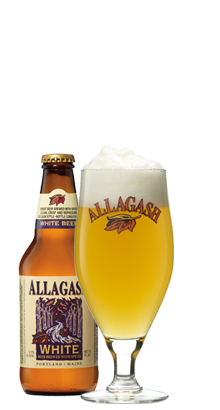
A simple mention of Blue Moon or Shock Top curls the beards of most craft brewers.
Those beers, made by huge industrial brewers MillerCoors and Anheuser-Busch, are widely derided by craft lovers as “crafty” — beers that conceal their true, mass-producer origins and masquerade as craft.

About 15 years ago, when Tod poured a sample glass of his signature Belgian-style wheat beer, Allagash White, bartenders and retailers uttered to him a common remark: “what’s wrong with it?” Now, thanks in part to these big beer companies, times have changed.
“Beers that they called Belgian-style beers got the Belgian-style name on the map,” Tod said.
The irony doesn’t stop there for Allagash. Based in sleepy Portland, Maine, the brewery calls Los Angeles its biggest market. It’s a connection with both cultural and geographic polarity, but it’s true nonetheless, and it’s had a role in taking Allagash to where it is today: growing at around 30 to 35 percent per year and with Tod forecasting the production of 60,000 barrels for 2013.
Tod struggled to explain why Allagash White succeeds in the “City of Angels.” He gave credit to his strong relationship with Wine Warehouse, which distributes Allagash in the greater L.A. region and many other parts of California, to Hallie Beaune, the brewery’s sales representative in California, and to his own guerrilla marketing; driving around, visiting accounts and establishing relationships with retailers.
However, the best explanation might just be the L.A. climate.
“We have a clientele that seems to love things that you can drink on a hot day,” said Chanel Johnson, a beer stocker at Santa Monica’s BevMo!, a liquor store chain based on the West Coast.
Johnson said that many people in Los Angeles know Allagash from word-of-mouth or from previous drinking experiences. It’s a beer that, whether intentional or not, meshes well with the culture and the heat of the city. She also said that while craft beer is commonly associated with young men, Allagash White’s drinkability and style appeals to women as well.
“I think any sweet white ale crosses gender lines,” Johnson said.
Tod said that even after 18 or 19 years of drinking Allagash White, he continues to spot new subtleties in the beer’s complex flavor and aroma. One sip might be spicy. Another could be sweet. The beer drinkers of Los Angeles also seem to sense the beer’s appeal. Johnson said that 4-packs of Allagash White sell for about $9 to $10 at BevMo!, but it stills sell well despite its high price point.
“For a pricier beer, it really doesn’t matter,” Johnson said. “People will go out of their way to make sure they get Allagash.”
Kevin Day, the beer manager at Wine Warehouse, said that Allagash sales are up about 40 percent compared to last year, and that this growth rate has been steady for the past few years. He said that Tod’s level-headed nature and the beer’s superior quality has lifted it to exceptional sales on the West Coast.
“Even though they’re not fighting over price, they win when it comes to quality,” Day said. “People are willing to pay more for quality now.”
To meet this demand, Tod said that he’s about 98 percent finished with an addition: a new, fully-automated, German-made brewhouse, which has 70 barrels (double the size of Allagash’s original brewhouse) and is adjoined by a new Allagash retail store. He also recently installed three tanks purchased from his neighbor, Baxter Brewing, for experimental brews. While he doesn’t yet have the capacity, Tod said that the brewhouse is capable of producing 150,000 barrels— a number he’s not quite ready for.
“It’s hard to incrementally grow with some portions of the brewery,” Tod said.
He’s learned this from Allagash’s past. Before the mainstream acceptance of Belgian-style beers, Tod tried to distribute his beers into as many states as possible, simply to keep his business afloat. However, for many of the same reasons as Los Angeles, Tod said that his other best markets are all cities: Boston, New York, Washington D.C., Philadelphia, Atlanta, Chicago, San Diego and San Francisco. Once his brewery became profitable, Tod realized that he had to change his previous business plan and scale back his footprint, but not his production. From 2006 to 2011, Allagash pulled out of Washington, Oregon, Colorado, Texas, Wisconsin, Indiana, Ohio, Florida and rural parts of New York and Pennsylvania. Like many brewers before and after him, Tod wanted to go deep, not wide.
Despite the temptation to keep growing, Tod said that the new brewhouse is enough of an achievement for Allagash at this time. He’s in no rush to reach 150,000 barrels or re-enter the states he left. Besides, these expansions would require more renovations for the facility. Now that the trucks and workers have been gone for the past few weeks, he likes Allagash’s positioning.
“It’s a lot more peaceful right now,” Tod said.
Instead, he’ll continue to ship to Los Angeles, where still-growing demand and a high price point maintains Allagash’s profitability there. He’ll also remember to credit big beer for resuscitating his brewery, even as most craft brewers wouldn’t dare do the same.
